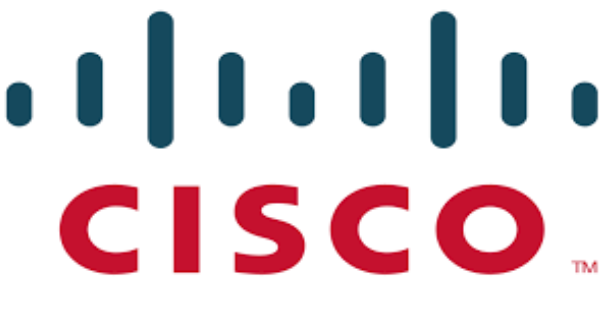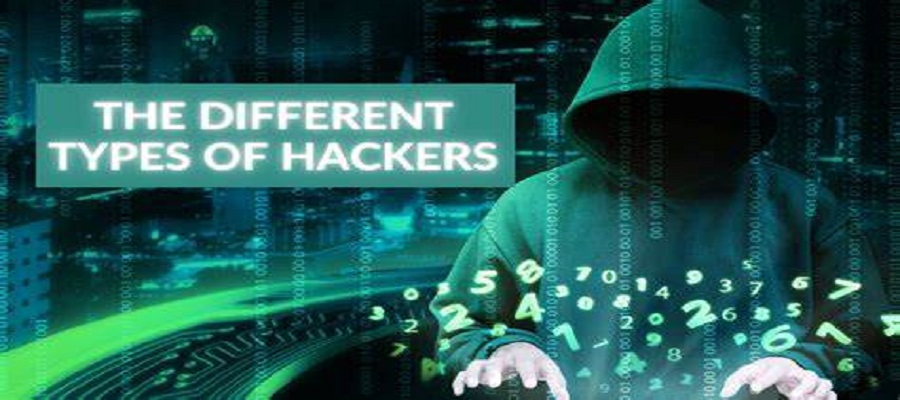E-Business
Cisco Delivers Enhanced Network Insights, Enables Smarter Automation

Global technology leader, Cisco announced new intent-based networking solutions to help optimize business and network operations. As organizations face mounting challenges to deliver consistent and positive digital experiences, Cisco is driving networking advancements to keep customers connected, productive and secure.

The new innovations, focused on simplifying automation and providing IT and business insights, will enable IT teams to be agile, while staying closely aligned with business objectives. This alignment has never been more important than in today’s dynamic business environment.
“In today’s everchanging world, it is critical for a business’s network to be in tune with its strategic goals, whether that’s supporting and securing a remote workforce, accelerating expansion to the cloud, or driving business transformation,” said Scott Harrell Senior Vice President and General Manager of Cisco’s Intent-based Networking Group.
“With this announcement, Cisco is helping IT rapidly roll out advanced networking and security capabilities by simplifying and automating segmentation and cloud-based security at scale. We’re delivering on our promise to build a networking platform that continues to deliver innovation to help customers, no matter where they are on their intent-based networking journey.”
Cisco is providing advanced automation capabilities to drive better user experiences, while simplifying processes for IT. Automation has become foundational to increasing IT efficiency, enabling IT teams to become increasingly flexible and proactive while reducing the amount of time simply maintaining the network. New automation innovations include:
- Cisco SD-WAN Innovations: Cisco SD-WAN powered by Viptela now offers complete cloud-native security through the integration with Cisco Umbrella to deliver protection to enterprises against major web attacks arising from SaaS and Internet access. Cisco Umbrella offers secure web gateway (SWG), DNS-layer security, firewall, and cloud access security broker (CASB) functionality in one integrated cloud service.
With automated provisioning and simplified licensing, Cisco SD-WAN unified with Cisco Umbrella is fast to deploy and easy to consume while delivering an optimized user experience and the best security protection.
This convergence of security and networking is a crucial step for customers as they move towards a SASE architecture. Other new SD-WAN innovations include support for multicast and integrated voice and unified communications.
- Cisco User-Defined Networks: With Cisco User-Defined Networks, IT staff can provide end-users control of their own wireless network partition through Cisco DNA Center. End-users have the ability to securely onboard their devices, as well as control which devices can connect to their own personal network partition through the User Defined Network mobile app.
Cisco is expanding insights to previously unmonitored devices, granting IT the ability to drive more efficient segmentation and better manage IoT devices.
Network segmentation – the act of dividing the network into smaller parts to improve performance and security – has traditionally been a difficult task, particularly in environments with an evolving and diverse ecosystem of IoT endpoints. To help solve for this challenge, Cisco is introducing:
- AI Endpoint Analytics: With AI Endpoint Analytics, Cisco DNA Center will identify previously unknown endpoints at scale, then use various contextual sources and artificial intelligence to logically group them. With this information, IT can create the basis for scalable, automated policies.
- Group-based policy analytics: Cisco DNA Center can analyze traffic flows between groups of endpoints to design policies that can be used as the basis for proper segmentation.
Today’s wireless networks are adding immense business value, not just through the experiences they enable, but through the behavioral insights they provide. Cisco’s indoor location services platform, Cisco DNA Spaces is adding new capabilities to extend visibility and provide information to businesses as they look to maintain safe physical spaces.
- Cisco DNA Spaces for Return to Business: Cisco has added real-time and historical analysis tools to the platform, designed to help businesses monitor workspaces to meet social distancing guidelines. Customers can leverage built-in apps to monitor real-time density in buildings and analyze how buildings are being utilized. This information is critical as businesses aim to help keep people safe, while making workspaces more effective and efficient.
- Indoor IoT Services: Cisco DNA Spaces introduces the industry’s first Indoor IoT-as-a-Service offering on WiFi-6 access points to help customers rapidly and cost-effectively deploy indoor IoT applications at scale. Cisco DNA Spaces simplifies activation, configuration and management of a wide number of supported IoT devices, including support for Bluetooth (BLE) devices. Through Cisco’s wide ecosystem of industry partners, Cisco DNA Spaces enables asset tracking, environmental monitoring of employee safety, space utilization, room finding and other use cases across healthcare, workspaces, retail, education, manufacturing and hospitality verticals.
Cisco’s intent-based networking portfolio is designed to deliver consistent, ongoing innovation to customers.
Through software-based platforms, built on industry-leading hardware, Cisco can provide the flexible, secure network a business needs to drive business transformation and stay resilient in uncertain times.
Cisco DNA Center and Cisco DNA Spaces innovations announced today will be available in the summer of calendar year 2020. Cisco SD-WAN innovations are available today.
E-Business
Microsoft Server Hack Likely Solo Actor, Thousands at Risk

A widespread cyberattack targeting Microsoft’s (MSFT.O) server software used by thousands of government agencies and businesses for internal document sharing was likely orchestrated by a single actor, a cybersecurity researcher said on Monday.

Microsoft issued an alert on Saturday warning of “active attacks” on on-premise SharePoint servers.
The company clarified that SharePoint Online, part of the Microsoft 365 cloud suite, was not affected by the exploit, which is considered a “zero-day” vulnerability due to its previously undiscovered nature.
“Based on the consistency of the tradecraft seen across observed attacks, the campaign launched on Friday appears to be a single actor. However, it’s possible that this will quickly change,” Rafe Pilling, director of Threat Intelligence at Sophos, a British cybersecurity firm.
That tradecraft included the sending of the same digital payload to multiple targets, Pilling added.
Microsoft said it had “provided security updates and encourages customers to install them,” a company spokesperson said in an emailed statement.
It was not clear who was behind the ongoing hack. The FBI said on Sunday it was aware of the attacks and was working closely with its federal and private-sector partners, but offered no other details.
Britain’s National Cyber Security Centre did not immediately respond to a request for comment.
The Washington Post said unidentified actors in the past few days had exploited a flaw to launch an attack that targeted U.S. and international agencies and businesses.
According to data from Shodan, a search engine that helps to identify internet-linked equipment, over 8,000 servers online could theoretically have already been compromised by hackers.
Those servers include major industrial firms, banks, auditors, healthcare companies, and several U.S. state-level and international government entities.
“The SharePoint incident appears to have created a broad level of compromise across a range of servers globally,” said Daniel Card of British cybersecurity consultancy, PwnDefend.
“Taking an assumed breach approach is wise, and it’s also important to understand that just applying the patch isn’t all that is required here.”
E-Business
Flaw in Microsoft SharePoint Sparks Global Cybersecurity Concern

A Microsoft SharePoint server software flaw is causing widespread concern across the global cybersecurity landscape, exposing thousands of organisations to hackers exploiting a new vulnerability.

This critical vulnerability exposes government agencies, universities, and energy firms who are at risk of cyberattacks. The flaw, now being actively exploited by unidentified hackers, allows attackers to gain deep, remote access to on-premise SharePoint servers.
The U.S. Cybersecurity and Infrastructure Security Agency (CISA) has confirmed that the vulnerability can enable malicious actors to access internal files, change configurations, and even execute remote code, effectively giving them high-level control over compromised systems.
Microsoft has also acknowledged the breach and released a security patch aimed at stopping the ongoing attacks. The firm urged users to apply the patch immediately, saying it is working to roll out additional protections, according to a statement reported by Bloomberg.
Despite these efforts, cybersecurity researchers warn that systems may remain vulnerable if attackers have already infiltrated networks, stolen authentication keys, or implanted persistent backdoors before patches were applied.
The United States hosts the highest number of these vulnerable systems, followed by the Netherlands, the United Kingdom, and Canada.
The Washington Post reported that the breach has already impacted a range of institutions, including U.S. federal and state agencies, academic institutions, energy companies, and a telecommunications firm in Asia.
This latest incident adds to a growing list of cybersecurity challenges facing Microsoft. In March, the company revealed that Chinese state-backed hackers had targeted its cloud-based services to infiltrate both U.S. and international organisations.
Last year, the U.S. Cyber Safety Review Board sharply criticised Microsoft’s internal security culture as ‘inadequate’ after a separate breach compromised its Exchange Online mail systems and exposed communications of high-level officials.
E-Business
NIMC Enrolls 122m for NIN, Cuts Extortion by 40 Percent

National Identity Management Commission (NIMC) has said that it has reduced incidents of extortion and unofficial charges in the identity enrolment process by over 40 per cent.

Abisoye Coker-Odusote, director general of NIMC,
Abisoye Coker-Odusote, director general of NIMC, who disclosed this at an event in Lagos at the weekend, attributed the drop to improved transparency in fee structure at the commission.
The CEO was represented by Lanre Yusuf, director, Information Technology and Identity Database, NINC.
The workshop, organised by the identity regulator in partnership with the Guild of Corporate Online Publishers, focused on repositioning Nigeria’s digital identity landscape and combating misinformation.
According to Coker-Odusote, the sharp reduction in illicit charges is a direct result of reforms introduced by NIMC to curb racketeering and unauthorised payments, which have for years plagued the national identity registration process..
“Enrolment for the National Identification Number remains free. We have standardised modification and authentication fees, and these are publicly disclosed. Our enforcement of a transparent fee structure has resulted in a 40 per cent drop in extortion and unofficial charges,” the regulator said.
She explained that prior to her assumption of office, complaints about exploitative fees at enrolment centres were widespread, fuelling public distrust in the system.
However, she noted that the commission had since prioritised transparency and stakeholder accountability, ensuring that Nigerians no longer have to pay above the legally mandated fees. “We are addressing deep-rooted issues that once undermined public confidence in the enrolment process,” she said.
The NIMC chief added that the commission had introduced digital tools to reduce human interference in the registration process.
These include the NINAuth mobile app, the Self-Service NIN Enrolment and Modification app, and Contactless Biometric Solutions, all designed to make the system more efficient, secure, and user-friendly.
Coker-Odusote also reiterated the commission’s commitment to inclusion, stressing that no Nigerian should be left behind in the country’s digital identity transformation.
According to her, over 7,167 front-end enrolment agents and partners have been revalidated and retrained to serve the public professionally, with strict monitoring mechanisms now in place.
In addition, NIMC has deployed grievance redress officers across all 36 states to handle complaints from Nigerians about enrolment centres and agents, with a 24/7 toll-free line available to report any misconduct.
The reforms are part of broader efforts by the Commission to build a unified, secure, and people-centred digital identity system that facilitates access to government services, financial inclusion, social protection, and national planning.
Coker-Odusote called on media partners to support the Commission in disseminating accurate information, countering misinformation, and raising awareness about the benefits of digital identity.
“We are asking our partners in the media to help us combat fake news and promote transparency in the identity ecosystem. We need to ensure every Nigerian understands their rights and knows that their identity is key to accessing opportunities and services,” she said.

 E-Financial2 days ago
E-Financial2 days agoUBA’s LEO Becomes Africa’s First Chatbot to Enable Cross-Border Payments

 News2 days ago
News2 days agoUN Appoints Sa’id, Nigerian to Nuclear Panel

 E-Business2 days ago
E-Business2 days agoNIMC Enrolls 122m for NIN, Cuts Extortion by 40 Percent

 Telecom2 days ago
Telecom2 days agoMTN Urges Nigerian to Regards Telecom Infrastructure as National Assets

 General News2 days ago
General News2 days agoAppeal Court Nullifies Registration of ‘KPMG Professional Services’

 Telecom24 hours ago
Telecom24 hours agoMTN Nigeria Rewards 1,500+ Winners with ₦290m in Mega Billion Promo

 Telecom2 days ago
Telecom2 days agoBitget Launches $6M Global Crypto Trading Contest with New Competitive Segments

 E-Financial24 hours ago
E-Financial24 hours agoNaira Slides Again, Hits ₦1,532.34/$ Despite CBN’s Dollar Push
























